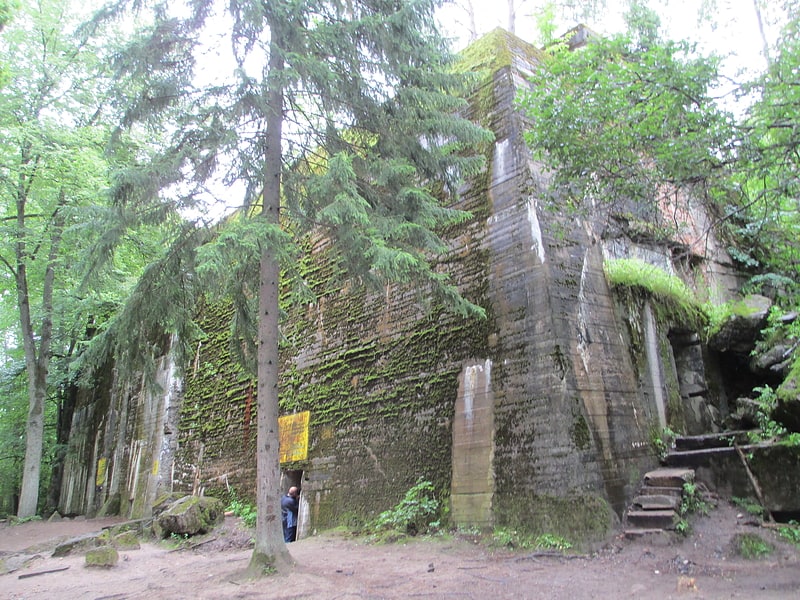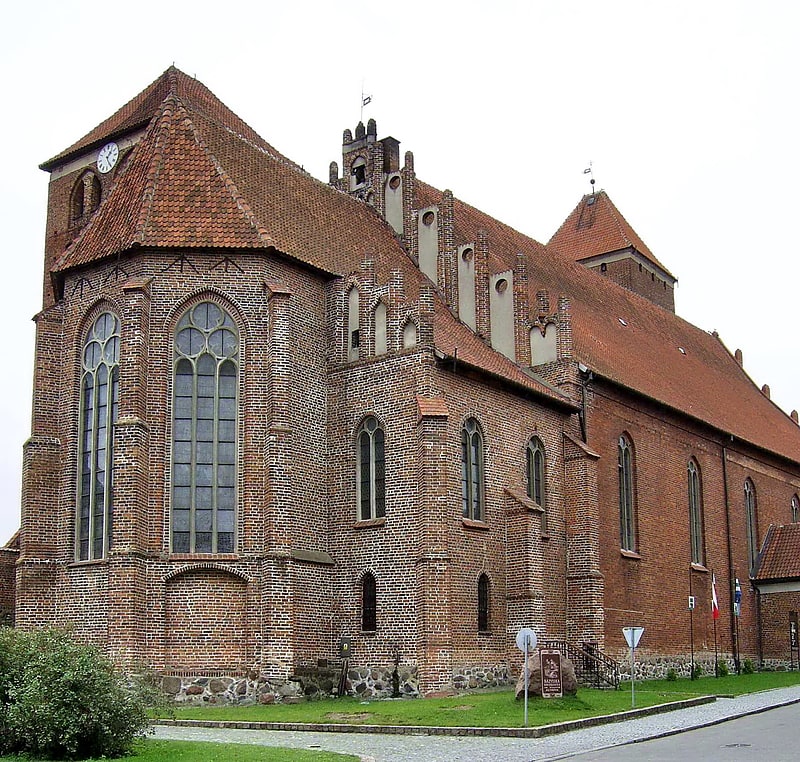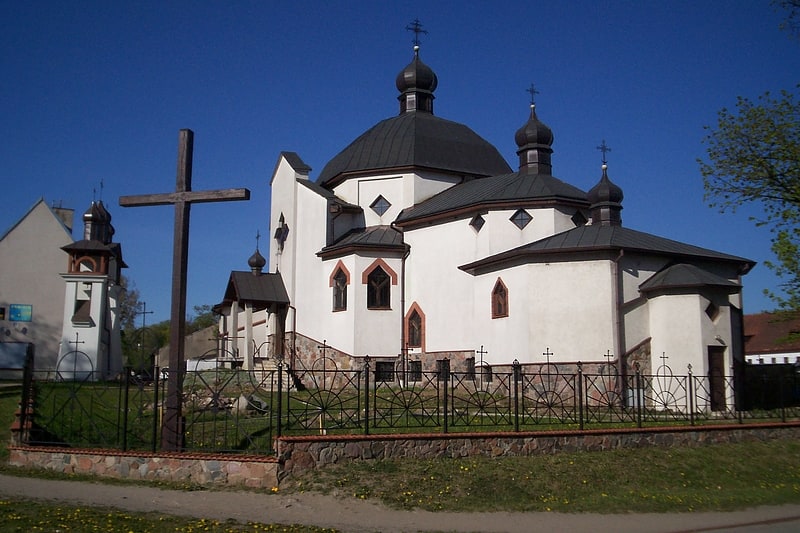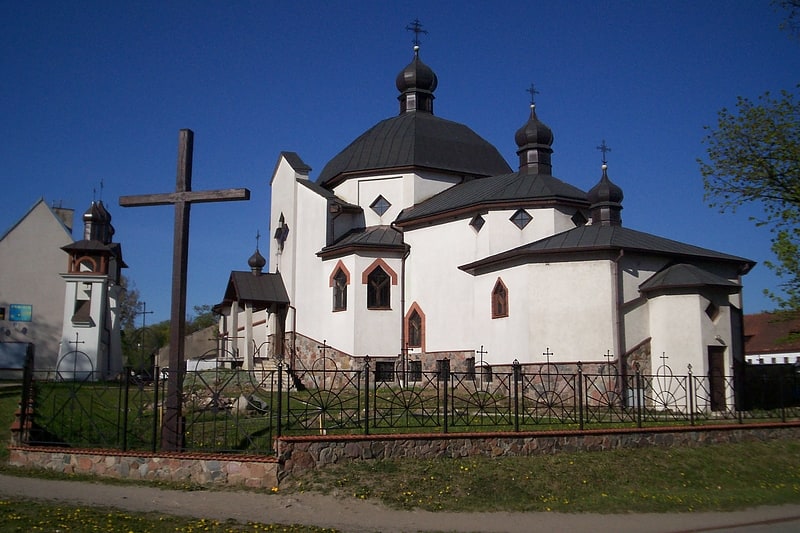Discover 4 hidden attractions, cool sights, and unusual things to do in Kętrzyn (Poland). Don't miss out on these must-see attractions: Wolf's Lair, Kościół Św. Jerzego, and Cerkiew greckokatolicka Świętego Bazylego Wielkiego. Also, be sure to include Cerkiew Świętego Bazylego Wielkiego in your itinerary.
Below, you can find the list of the most amazing places you should visit in Kętrzyn (Warmian-Masurian).
Table of Contents
Wolf's Lair

Also known as: Wilczy Szaniec
Ruins of Hitler's wartime command base. The Wolf's Lair served as Adolf Hitler's first Eastern Front military headquarters in World War II.
The top-secret, high-security site lay in the Masurian woods about eight kilometres (five miles) east of the small East Prussian town of Rastenburg, now Kętrzyn in present-day Poland as a result of post-WWII territorial changes. Three security zones surrounded the central complex where the Führer's bunker was located. These were guarded by personnel from two SS units: the SS-Begleitkommando des Führers, and the Reichssicherheitsdienst. The Wehrmacht's armoured Führerbegleitbrigade was held in readiness nearby, but, as a part of the Heer's elite Grossdeutschland Division, was used to counter-attack Red Army break-throughs in Army Group Centre's front and rescue cut-off Heer, Luftwaffe fallschirmjager and SS panzer troops. Despite the security, the most notable assassination attempt against Hitler took place at the Wolf's Lair on 20 July 1944.[1]
Address: Gierloz 5, 11-400 Gierloz
Kościół Św. Jerzego

Collegiate Basilica of St. George in Ketrzyn - St. George's church built on the site of a former watchtower from 1359, extended until the first years of the 16th century.
The best preserved defensive church in Masuria. Initially it was a hall-like, one-nave building located in the southwestern corner of the town. In the crown of the walls defensive porches and a tower topped with a blanket were built. At the beginning of the fifteenth century a second tower (bell tower) was erected, and at the end of the century the building was rebuilt into a three-nave pseudo-basilica (the northern side aisle was added, the central and southern naves are within the outline of the hall church). After the fire in 1500, during the reconstruction, the existing and characteristic deviation of the church axis was created (the chancel is not exactly on the axis of the central nave, only two windows are visible from the middle of the nave: the right and the middle one, the third one is not visible). Noteworthy in the church are the crystal vaults from 1515. (made by master Matz from Gdansk), the sixteenth-century pulpit, the organ from 1721. (Josue Mosengel creator of the organ in Swieta Lipka) were rebuilt - the current one from 1975 has 43 voices, the tombstone (epitaph) of Christopher Schenk von Tautenburg from 1597 and the punishment room (entrance from the church) located under the high tower.
Until World War II it was called the "German church" (in contrast to the "Polish church" standing next to it). After the Germans were expelled in 1945, the church was used by the Evangelical parish in Kętrzyn. A year later, in 1946, the building was requisitioned by the communist authorities and immediately handed over to the Roman Catholic Church.
As a Roman Catholic church, St. George's Church has had the title of Minor Basilica since July 22, 1999, and has also served as a collegiate church since June 7, 1992. After the Reformation, the former chapel of St. James was used as a baptistery, which after 1946 was modeled after the Gates of Dawn in Vilnius. Walking pilgrimages to Vilnius always take place from here at the beginning of July.
Within the preserved defensive walls, adjacent to the church of St. George, there is a former vicarage built in the Middle Ages (XIV/XV-XVI c.), and later pastor's house (XVI c. - 1817), converted in the nineteenth century into a gymnasium (years 1817-1907), until 1945 functioning as a so-called Widow's House (Zamkowa 4) - a place of residence for the wives of deceased priests. In 2011, by the outer walls of the former pastor's house, archaeological excavations were conducted, led by archaeologist Mariusz Biel. As a result, the current technical condition of the foundation walls was documented and the cultural layers were registered, along with the monuments. The material made it possible to distinguish as many as 5 chronological phases on the church hill, including the oldest settlement phase of the 14th-15th centuries.
A gate at the west façade leads to the interment area, where a lapidarium has been set up to house historic tombstones, monuments, epitaphs and cast iron crosses.
Address: Zamkowa 5, 11-400 Kętrzyn
Cerkiew greckokatolicka Świętego Bazylego Wielkiego

St. Basil the Great Church in Ketrzyn - a Greek Catholic church in Ketrzyn, in the province of Warmia and Mazury. It is a modern temple built in 1996-1997, designed by Jacek Mermon. Inside the church there is a contemporary iconostasis. The church is located on Pocztowa Street.
Address: ul. Dworcowa 3A, 11-400 Ketrzyn
Cerkiew Świętego Bazylego Wielkiego

St. Basil the Great Church in Ketrzyn - a Greek Catholic church in Ketrzyn, in the province of Warmia and Mazury. It is a modern temple built in 1996-1997, designed by Jacek Mermon. Inside the church there is a contemporary iconostasis. The church is located on Pocztowa Street.
Address: 2 Pocztowa, Kętrzyn